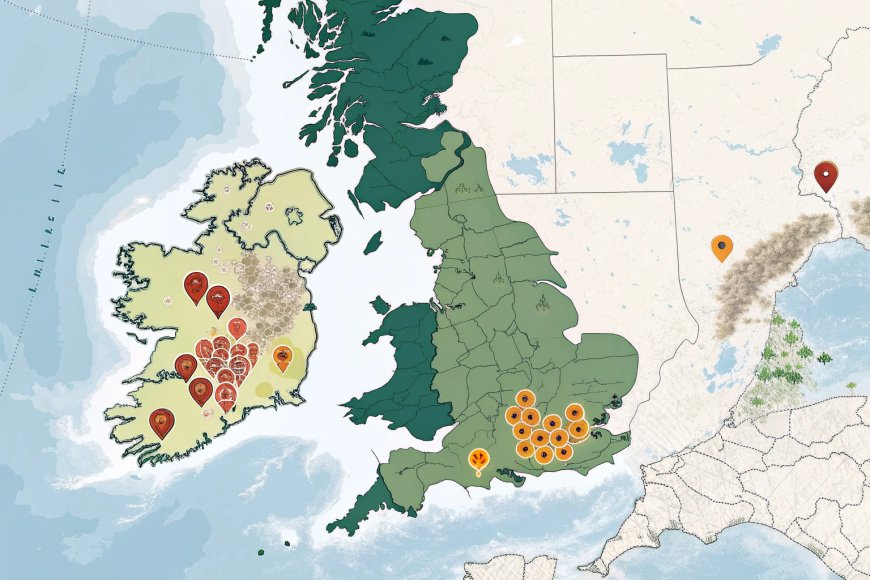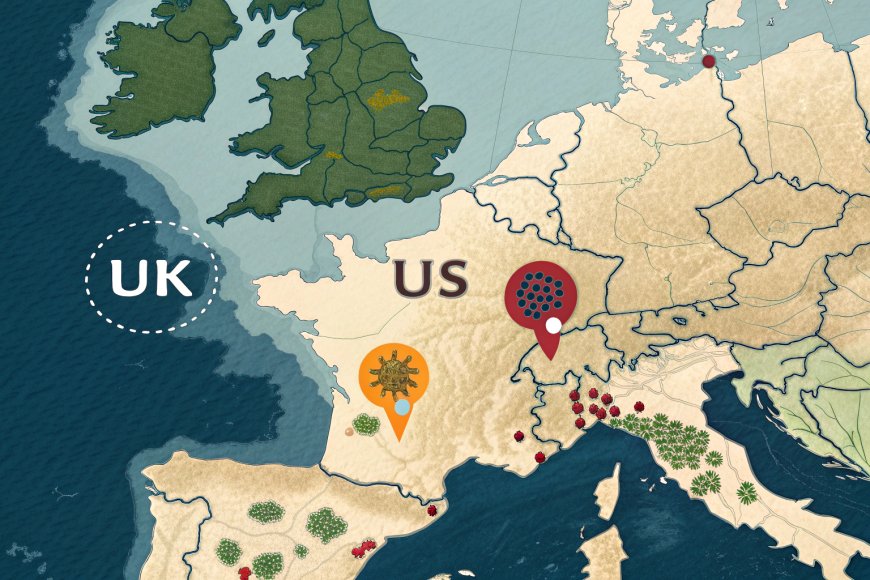The Silent Invasion: How a Killer Fungus Could Reshape Global Health
Discover how a deadly fungus is spreading from the UK to the US, fueled by climate change. Explore its risks, global health implications, and why this "superbug" could be the next pandemic-level threat.
The Rise of a Silent Killer: What Is This Fungus?
In 2023, hospitals in the UK reported a surge in cases of Candida auris, a drug-resistant fungus dubbed the "killer fungus." Unlike typical infections, this pathogen thrives in healthcare settings, preying on immunocompromised patients. Its mortality rate hovers around 30-60%, and it’s alarmingly resistant to common antifungal treatments. Scientists warn that climate change is accelerating its spread—warmer temperatures allow fungi like C. auris to adapt and survive in regions previously deemed inhospitable.

A map of the UK and US with hotspots marked for fungal outbreaks.

A map of the UK and US with hotspots marked for fungal outbreaks.
Why Climate Change Is Fueling the Fungal Threat
For decades, human body temperatures acted as a natural barrier against fungal infections. But as global temperatures rise, fungi are evolving to withstand heat. A 2024 study linked C. auris outbreaks in the UK to rising coastal temperatures, which may have triggered genetic mutations. Researchers now predict the fungus could infiltrate the US, targeting states like Texas and Florida, where humidity and heat create ideal breeding grounds.

Healthcare worker sanitizing hospital ward against fungal infections.
The Superbug Scenario: Are We Prepared?
The World Health Organization (WHO) lists C. auris as a "critical priority" pathogen, yet public awareness remains low. Hospitals struggle with containment—the fungus can cling to surfaces for weeks, and standard disinfectants often fail. In the UK, outbreaks have forced entire wards to shut down. Meanwhile, the US faces a testing bottleneck: fewer than half of states have the labs needed to rapidly identify the fungus.

Climate change melting glaciers and spreading fungal threats.
Global Health Implications: A Looming Crisis
If unchecked, this fungus could mirror the early days of COVID-19. Unlike viruses, fungi are harder to treat and can survive in diverse environments. Dr. Jane Carter, a mycologist at Imperial College London, warns, "We’re underestimating how climate shifts are rewriting the rules of infectious diseases." The economic toll would be staggering: prolonged hospital stays, expensive treatments, and workforce disruptions.

Bleach cleaning to prevent Candida auris contamination.
How to Stay Safe: Prevention Over Panic
- Hygiene First: Alcohol-based sanitizers are ineffective against C. auris. Use bleach-based cleaners for high-touch surfaces.
- Demand Transparency: Advocate for hospital disclosure of fungal outbreaks.
- Support Research: Push for funding into antifungal vaccines, a neglected area of study.
Climate change isn’t just melting glaciers—it’s empowering deadly fungi. With C. auris spreading silently, global healthcare systems must act now. Prevention, awareness, and innovation are our best defenses.
The Climate-Fungus Feedback Loop
Rising temperatures don’t just help fungi survive; they also force humans into closer contact with pathogens. Urbanization and deforestation disrupt ecosystems, pushing wildlife (and their microbes) into human territories. A 2023 Lancet report highlighted that fungal infections could cost the global economy $6 trillion annually by 2050 if trends continue.

Medical research lab developing antifungal treatments.
Why Your Morning Coffee Could Be at Risk
Beyond healthcare, agriculture is vulnerable. Fungi like Fusarium (which threatens coffee and wheat crops) are becoming more aggressive. Imagine a world where your latte costs $20 due to fungal blights. This isn’t sci-fi—it’s a plausible future if research remains underfunded.
The killer fungus isn’t a distant horror—it’s here, evolving faster than our defenses. Combating it requires global collaboration, smarter policies, and public vigilance. Ignoring this threat could make COVID-19 look like a rehearsal.
What's Your Reaction?

























































